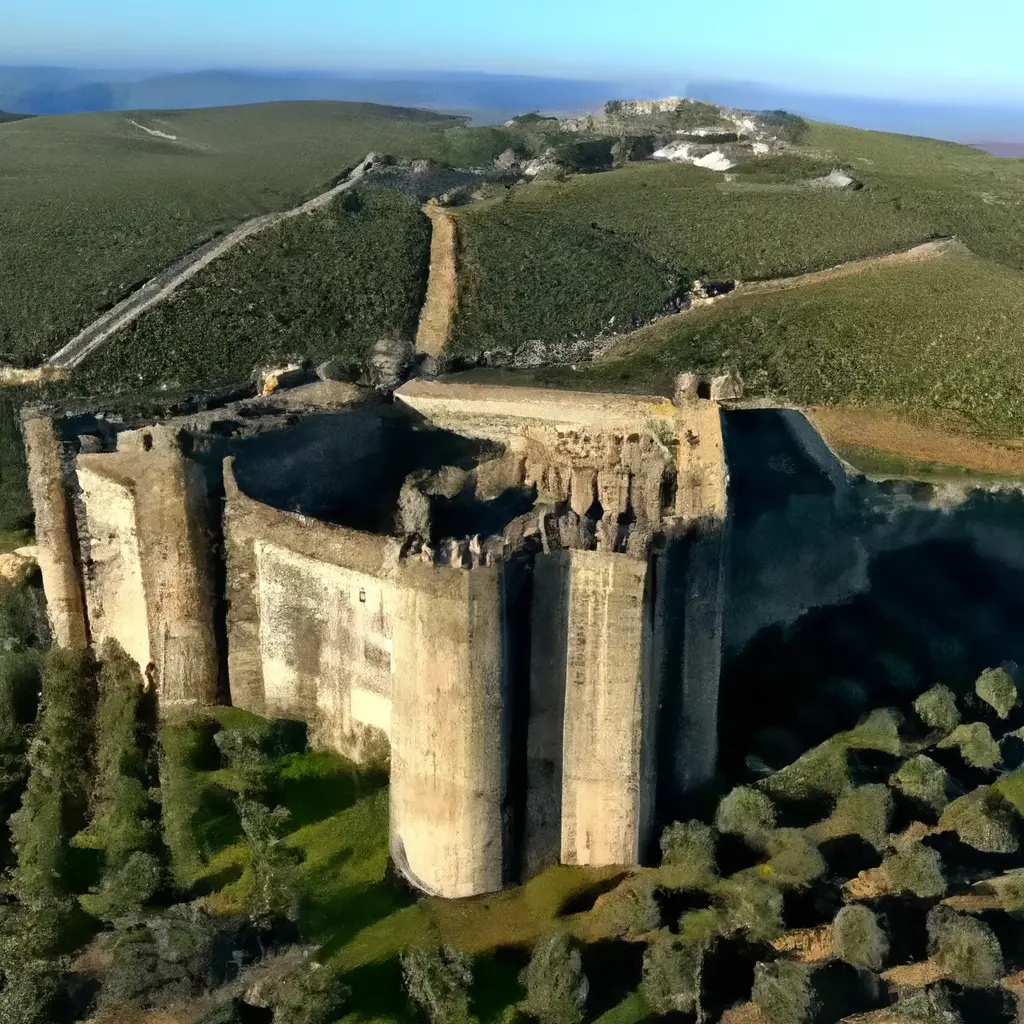The oldest castle in Spain is located in Andalusia: which one and where?

The land in Andalusia is steeped in history, and its castles rise like silent witnesses to past eras. Among the numerous fortifications scattered throughout the region, one of the oldest and most captivating treasures is hidden in Baños de la Encina, in the province of Jaén. This castle, known as Burgalimar Castle, proudly stands on a small hill and is undoubtedly one of the most striking historical monuments in Spain.
The History of Burgalimar Castle
This majestic castle, known in Arabic as Buri al-Hamma, which can be translated as "Castle of Bañoss," was built in 968 by the Caliph of Córdoba, Al-Hakam II. Its original purpose was to protect the border of Al-Andalus, as confirmed by an inscription located at the castle gates, the original of which is kept in the National Archaeological Museum in Madrid. At the very beginning of its existence, the Burgalimar Castle was not built for defensive purposes, as the region enjoyed a long period of peace. The initial construction of the castle was exceptionally complete, featuring strong walls, towers, and crenellated parapets, as well as an impressive adaptation to the surrounding topography, allowing it to be useful for many centuries.
Burgalimar Castle and the Castles of Jaén
Over time, especially in the 11th century, after the collapse of the Cordoba Caliphate into taifas, Burgalimar Castle became a point of conflict in the struggle between Muslims and Christians. Several Christian rulers, such as Alfonso VII of León and Alfonso VIII of Castile, managed to capture it at different times, although control fluctuated. However, it was only in 1225, with the decisive efforts of Fernando III of Castile, that the castle finally came under Christian ownership. Fernando III handed the castle over to the Archbishop of Toledo, Rodrigo Jiménez de Rada, and entrusted its defense to the Order of Santiago, which was involved in military operations in the south of the Iberian Peninsula. Since then, Burgalimar Castle has been known as the "fortress of seven kings," referring to the seven monarchs who occupied it during the Christian era: Alfonso VII, Alfonso VIII, Alfonso IX, Pedro II, Sancho VII, Fernando III, and Ferdinand the Catholic. Interestingly, the castle has preserved 14 towers, as if each pair serves as a reminder of these monarchs.
Transformations over the centuries
In the 15th century, changes were made to the castle, including the construction of the majestic Gomenage Tower. This tower signifies the adaptation to Christian architectural canons and is oriented towards the settlement, reflecting the feudal customs of that time.
The Burgalimar Castle witnessed significant episodes in Spanish history, including the occupation by French troops during the Napoleonic invasion.

Architectural features
The Burgalimar Castle majestically rises on a small rocky hill, dominating the city and its surroundings. Its strategic location at the entrance to the Guadalquivir Valley and, consequently, to Andalusia, makes it a key historical monument. The fortress is surrounded and fortified by a powerful wall with fourteen square towers in the caliphate style, all of equal height to the wall itself. These towers give the castle an undeniable defensive character. Additionally, there is the previously mentioned Gomenaja Tower, a Christian modification that stands out for its size and differs in architectural style, directed towards the people in a symbolic gesture of power. The castle's inner courtyard includes a military courtyard, which houses a cistern covered by a semicircular vault. Furthermore, traces of a small fortress from the Christian era can be seen, which divided the military square into two parts.
A century-old treasure, accessible to visitors
The Burgalimar Castle, with its invaluable historical and artistic significance, was declared a national monument in 1931. Currently, the tourist office in Baños de la Encina offers tours of this fortress for a symbolic price of 4.50 euros for adults and 2 euros for children. These tours not only delve into the medieval features of this monument but also discuss archaeological finds discovered on-site, dating back to prehistoric times. In conclusion, Burgalimar Castle in Baños de la Encina is a historical treasure, one of the oldest and best-preserved castles in Europe. With its rich history and impressive architecture, it is a must-visit for history and culture enthusiasts, as well as a window into the glorious past of the Spanish nation.
Comment
Popular Posts
Popular Offers

Subscribe to the newsletter from Hatamatata.com!
Subscribe to the newsletter from Hatamatata.com!
I agree to the processing of personal data and confidentiality rules of Hatamatata













